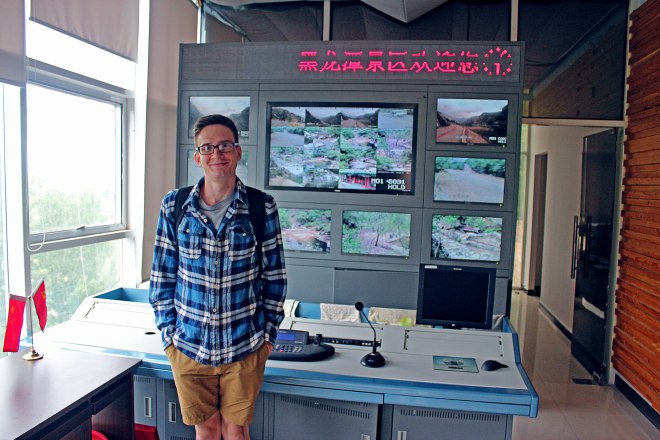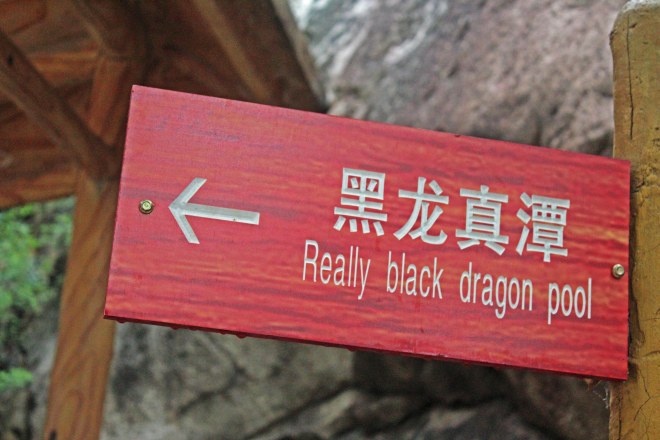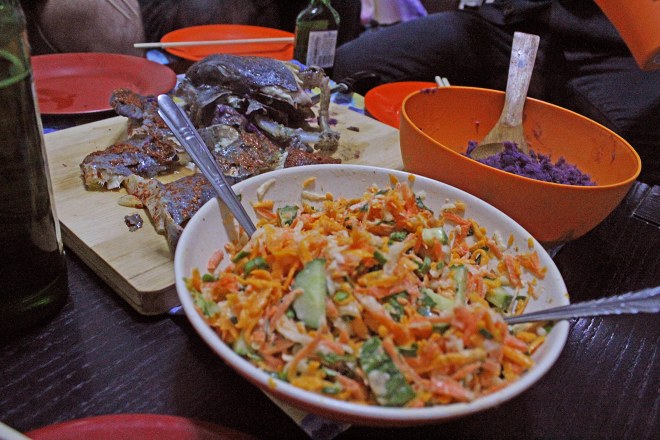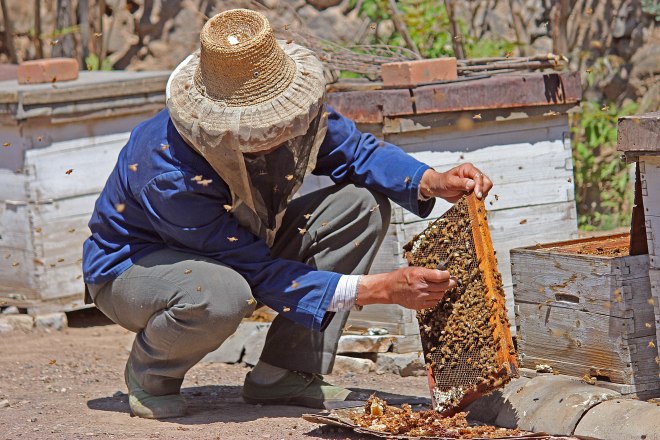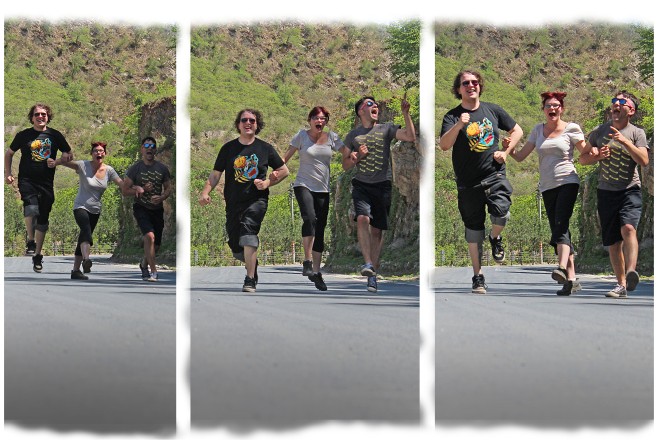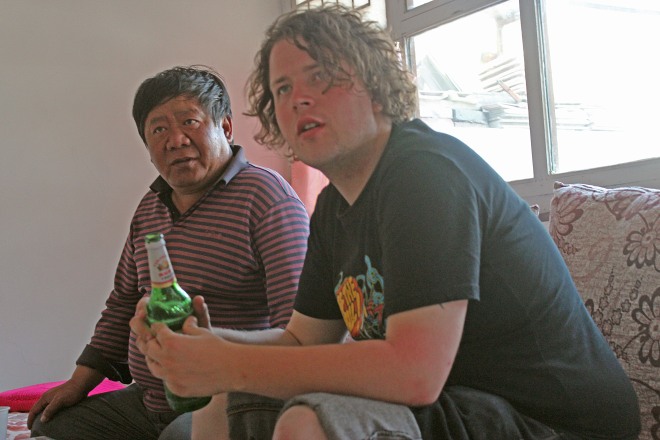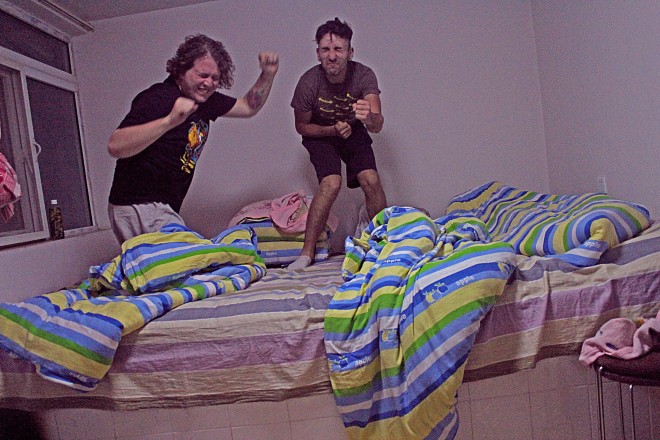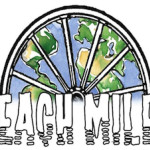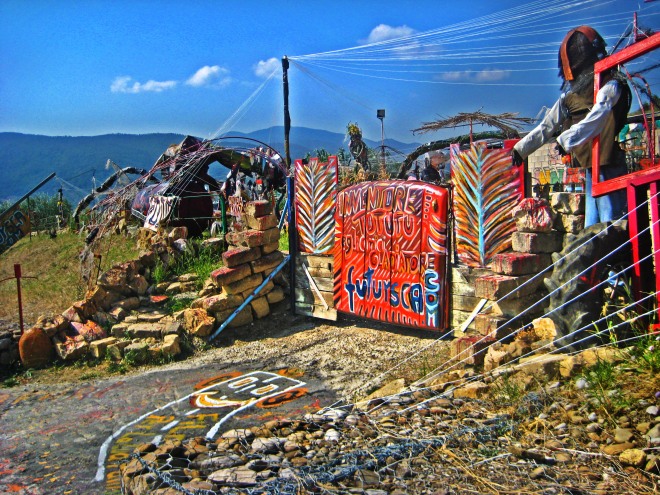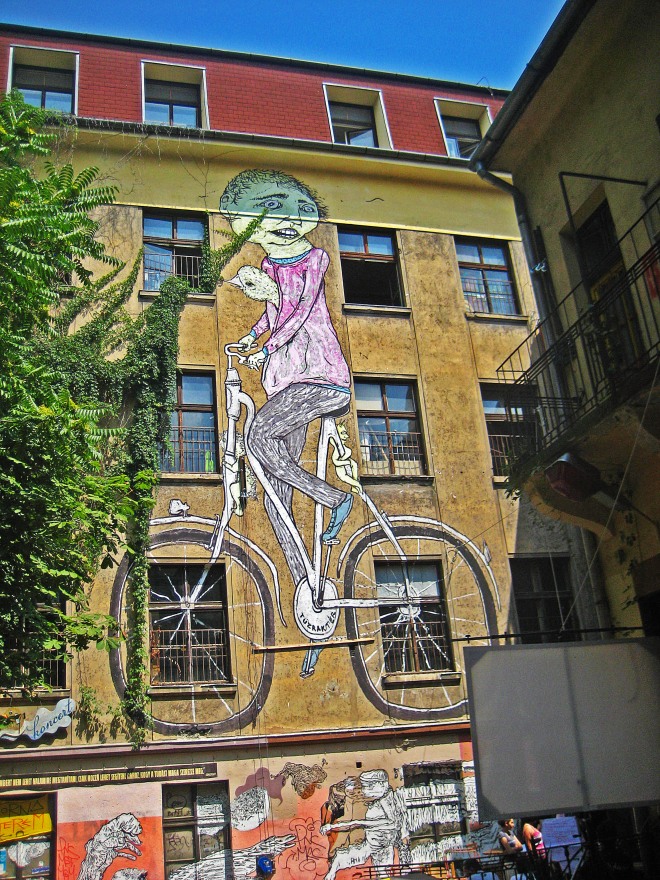Being able to connect with the locals, allows for one to access a ground level view of a city from through the eyes of the resident populace. While blogs can uncover the hard to reach places, the obscure museums, they gloss over mundanities and other unassuming treasures, that may be kept secrets only locals are privy to. Not that they are necessarily hiding them, like a Smegal-ish character and a ring, they just never had due cause to tell anyone of them and never considered them as anything out of the ordinary or worth mentioning. One of these places is Black Dragon Pond, located in Miyun County, some 93KM northeast of Beijing.
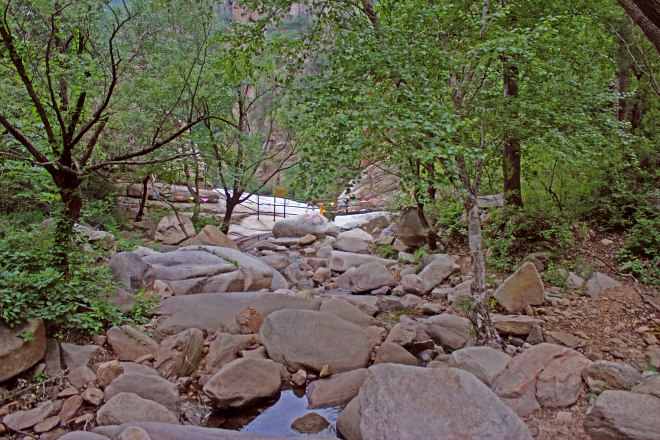
Lush wooded areas that provide an excellent escape from the smog, stark and population suffocation of Beijing.
The reason I found out about this place is that we were going there on a work outing with the company I was with. In fact, even as we headed there, trying to a get the name of the place and it’s location were a difficult task, as no one on our bus seemed to know where we were going and if they did, they weren’t able to translate it into discernable English. The ride on a rented bus, went through some beautiful countryside, mountainous, lush green covered cliffs overhead and even a glimpse at small, crumbling watch towers, curiously peaking out over the foliage like fearful, but interested rodents, their black window eyes, part of the Jiangjun Pass of the Great Wall. The ride was accompanied by a barrage of Chinese singing, laughter, charades, mocking of the three foreign teachers who understood nothing and were attempting to sleep off hang overs, which was near in possible by the vocal screeching, the over zealous chants and the electronic screech of an unnecessary amplification device.
Finally, the suddenly subduing of the amplified yammering and sing-song indicated that we had arrived. The group waddled off the bus. First stop was the barely distinguishable rest room. We cued in a line for the single revolting stall, with mixed emotions. The two foreign male teachers sought elsewhere to relieve themselves, knowing of the terror that waited them in that bog of horrors. When the foreign teachers had finished, we scampered over (trying to find creative movement terms) to an unmarked white building, and upon entering it, realized we were in some sort of information center for the Miyun area, complete with a Houston Control like archaic observance display.
After everyone had completed their one, twos or a combination of both, we entered the Heilongtan area through an ominous structure that served as a ticket booth. The Natural scenic area comprises of a 4km hike, through a cavern, along what appears to be a manmade river. This isn’t a rural hike through nature. There are well-maintained stairs, benches and trash bins as well as the occasionally overpriced food and chachkas kiosk for all your necessary and unnecessary needs. You can also rent boats to survey the small droplets of water by boat. Oh, also, none of the drops of water are connected, so the boat rides are constrained to the area of a children’s pool to pouring out the contents of bottle water into a bread tin. Surprisingly, there were English signs, that are ultimately comedic components to their Mandarin counterparts. What one can draw from this, is that no matter how vast China is and how little the components that make it up are, China’s pride and drive to dominant and control, make naming even the most bereaved of interest things, an important undertaking. The names of each tiny pond and cave echoes this concern, with names like The Miren Caves, the Suspending Pond and what it titled “the masterpiece”, the underwhelming “Black Dragon Pond”. Oh, but don’t miss the “Dripping Pool”, the mysterious “Reed Pool” and the where the fuck is it? “Hedgehog Stone”. All worth to read the signs and stare down upon these stagnant beauties.
After several steps, many of my coworkers, who never take more than several steps, were exhausted. But with a lot of encouragement and several taunts, most of them were rallied to make it to the top. On the top, we admired the pools from above from the viewing platform, had a snack, one of 85 snack breaks we had that day and headed down the same stairs, greeting other coworkers who were sill trying to make it to the top. Dejected, many of those who were ascending, started to descend with the rest of the group. Lucky no one had to be fireman carried. I was prepared to do so. Never the bottom, a red foam pad bridge, attached by ropes, had several of us attempting to cross it, without flipping the pads and sending yourself into the drink. It tempted several of us, including my boss and myself, to attempt, fail and fail some more, soaking our prides and clothing, in water that smelled of the sweat of the elderly. After leaving Heilongtan, we drove for ten minutes for a 100-course lunch and beer. After consuming ten times my weight, we went to a pool, where we were allowed to boat, play ping pong (which I actually was able to hold my own against others, which surprised myself), as well as go in this big inflatable ball that floats on the water, which you run in to make it spin. It’s hysterical, when several people are in it and are completely out of sync, flipping each other laughing at their incompatibility. Several drop kicks to the face it’s not as fun. Yet even more amazing than this wondrous tool of revelry was that some of my coworkers opted out participating in this part of the day because the hike had tired them out and they needed to sleep in the bus. Wow. Wheelchair ‘em now, Dan-O.
Directions are below, as well as an additional gallery. If you liked this please follow, like and share as well as follow me on twitter @pedaleachmile. Follow my adventures on here and at https://www.youtube.com/playlist?list=PL59E469A3DF414464.
DIRECTION AND COST:
ADMISSION: 35 RMB
DIRECTION:
I have to say, I have not personally gone here by public transit, so what I am pulling off the internet is a conference of several sources.
- Take bus 980 or 980 (express) at Outside Dongzhimen Station, and then get off in Miyun Drum Tower Station. Walk southwest about 656 feet (200 meters) to Miyun Theatre Station. Then take buses Mi-60, Mi-61, Mi-62, Mi-63, Mi-65, Mi-66, Mi-67, Mi-68, and get off at Black Dragon Pool Station. A
Again, before getting on a bus, show them the symbols for Black Dragon Pond, just to verify as buses change frequently.




